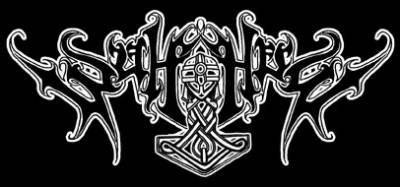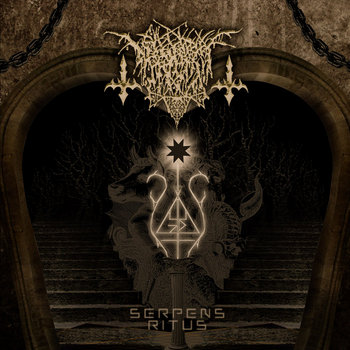| Archbishop of York | |
Copper styca of Wulfhere | |
| Appointed | 854 |
|---|---|
| Term ended | 892 or 900 |
| Predecessor | Wigmund |
| Successor | Æthelbald |
| Orders | |
| Consecration | 854 |
| Personal details | |
| Birth name | Wulfhere |
| Died | 892 or 900 |
675), king of the Mercians, was the second of the five sons of Penda q. V. and his queen, Cyneswitha. After Penda had been slain by Oswy q. V. at the battle of Winwaedfield (15 Nov. 655), Wulfhere was kept in hiding by Mercian ealdormen loyal to the Mercian royal house. AD 855-?877) was Ealdorman for Wiltshire, when England was experiencing turbulent times. An invading Danish army had landed in East Anglia, in 865 and had conquered all of the English. Wulfhere of Mercia: Wulfhere or Wulfar (died 675) was King of Mercia from 658 until 675 AD. He was the first Christian king of all of Mercia, though it is not known when or how he converted from Anglo-Saxon paganism. Wulfhere of York: Wulfhere (died c. 900) was Archbishop of York between 854 and 900. Wulfhere in Arabic Writing. 1 History 2 Links and References 2.1 Discover and Discuss 2.2 Footnotes Wulfhere led a band of Aesir raiders, who were eventually joined by the young Conan of Cimmeria. Waiting for the coming of Niord and his fighting-men, they were attacked by a group of Vanir, and both parties were annihilated, the battle ending when Conan slew the last Vanirman Hymdul.1 Appearances of Wulfhere (Aesir. Wulfhere has its origins in the Old English language. The name is of the meaning 'the name of a king'. Derivatives of Wulfhere include the names Wolfhear, Wolfheer, Wolfhere, Wulfhear, and Wulfheer. See also the related categories, king and english.
Wulfhere (died c. 900) was Archbishop of York between 854 and 900.

Life[edit]
Wulfhere was consecrated in 854.[1]
In 866 the vikingGreat Heathen Army attacked and captured York, and the following year the 'Danes' (as the English called vikings in general at the time) defeated an attempt to recapture the city, by Anglo-Saxon forces, the following year. Wulfhere made peace with the invaders and stayed in York.[2]
When, in 872, Northumbrians rebelled against the Danes and their collaborators, and Wulfhere fled York.[3] Eventually he found refuge with King Burgred of Mercia.[4][5]
Wulfhere was recalled in 873, and continued in York until his death in 892 or 900.[1] After his death, the seat remained vacant for eight years.[6]
Coinage[edit]
Like previous archbishops of York, Wulfhere issued styca coins.[7] His moneyers included Wulfred and Eardwulf.[7]
Wulfhere Of Wiltshire
Citations[edit]
- ^ abFryde, et al. Handbook of British Chronology p. 224
- ^Abels Alfred the Great pp. 116–117
- ^Abels Alfred the Great p. 142
- ^Stenton Anglo Saxon England p. 251
- ^Abels Alfred the Great p. 120
- ^Brooke 'York Minster' Churches and Churchmen p. 37
- ^ abPirie, Elizabeth J. E. (Elizabeth Jean Elphinstone), 1932-2005. (1996). Coins of the Kingdom of Northumbria c.700-867 in the Yorkshire collections : the Yorkshire Museum, York, the University of Leeds, the City Museum, Leeds. Llanfyllin, Powys: Galata. ISBN0-9516671-4-9. OCLC38338882.CS1 maint: multiple names: authors list (link)
References[edit]
- Abels, Richard Philip (1998). Alfred the Great: War, Kingship, and Culture in Anglo-Saxon England. New York: Longman. ISBN0-582-04047-7.
- Brooke, C. N. L. (1999). 'York Minster from the Ninth to the early Thirteenth Centuries'. Churches and Churchmen in Medieval Europe. London: Hambledon Press. pp. 37–68. ISBN1-85285-183-X.
- Fryde, E. B.; Greenway, D. E.; Porter, S.; Roy, I. (1996). Handbook of British Chronology (Third revised ed.). Cambridge, UK: Cambridge University Press. ISBN0-521-56350-X.
- Stenton, F. M. (1971). Anglo-Saxon England (Third ed.). Oxford, UK: Oxford University Press. ISBN978-0-19-280139-5.
External links[edit]
- Wulfhere 8 at Prosopography of Anglo-Saxon England
| Christian titles | ||
|---|---|---|
| Preceded by Wigmund | Archbishop of York 854–c. 900 | Succeeded by Æthelbald |

Wulfhere Productions
[Via]
A mystery sword made by the Vikings and engraved with the word Ulfberht has stumped archaeologists. The sword is forged in such a way that it looks to have been made by technologies that weren’t available until 800 years after the Viking era.
Around 170 of the swords have been found, all of which date from between 800AD to 1000AD, but the technology that would have forged them is from the Industrial Revolution of the 1800s and 1900s.
A television programme has looked into the mystery in more detail called, ‘Secrets of the Viking Sword’. Its researchers say that to forge the iron which the swords are made of, the ore needs to be heated to around 3000 degrees (F). It then liquefies and the impurities are removed. It is then mixed with carbon to strengthen the iron. However medieval technologies, which are what the Vikings would have been using, would not have been able to heat any metal or substance that high a temperature. In those days, the impurities would have been removed by hammering them out of the iron.
In contradiction to this, the Ulfberht contains almost no impurities at all and it has thrice the amount of carbon in it than any other metals that are known to have existed at the time. The metal the swords are made of is known as crucible steel.
Furnaces that could heat metals and substances to extremely high temperatures what not invented until the industrial revolution when the tools for heating iron to these temperatures were also developed.
A blacksmith has consulted with the television programme’s researchers and has said that to make a sword like the Ulfberht Is highly complex and difficult. The blacksmith is the only person who has the skills and tools available to try to reproduce the metal of the Ulfberht. He believes that whoever made the sword during the Viking era would have surely been thought to possess magic powers since the metal was and still is so special and unique, Ancient Origins reports.
The sword bends but doesn’t break, it stays razorsharp, and is very light weight, and so to soldiers it would have been thought of as almost supernatural.
The blacksmith spent many days working to try to recreate the Ulfberht using medieval technology, and finally did produce a similar metal with great skill and hard work. Researchers now believe it is possible that the knowledge to make the swords originated in the Middle East and that trade routes between there and Europe would have spread the knowledge and technologies. When those trade routes eventually closed, due to lack of use, so too did the Ulfberht ceased to continue being made.

